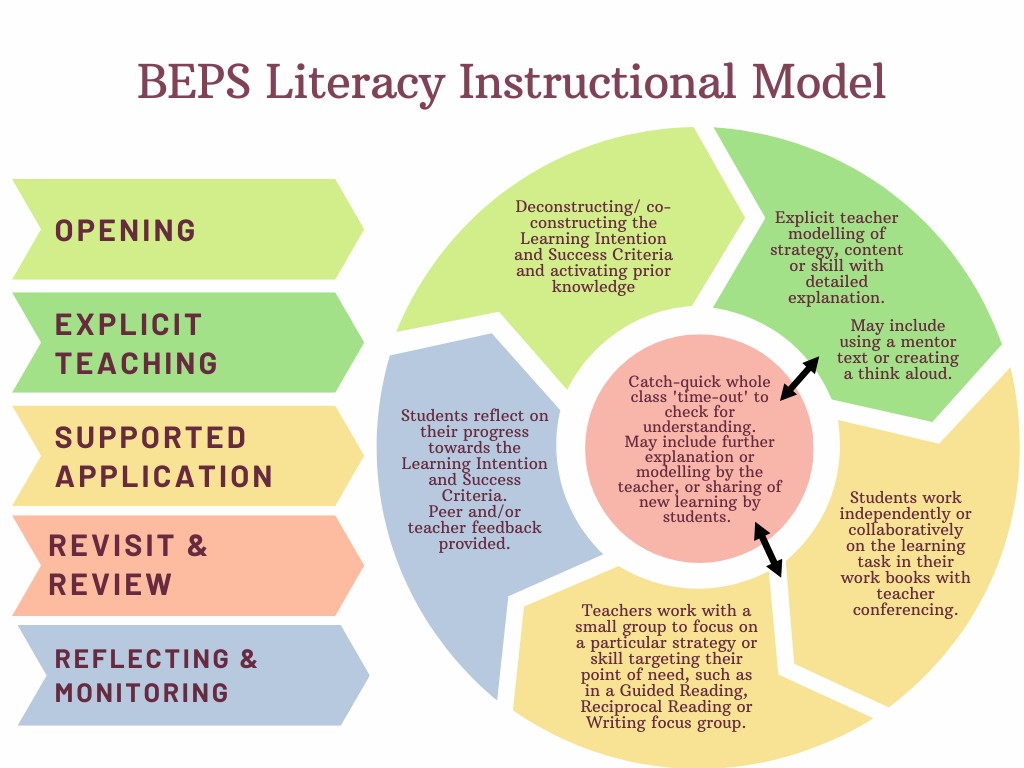English

English at Burwood East is taught using a variety of whole school approaches:
Phonics
In the junior school (Foundation to Year 2), students are explicitly taught a systematic synthetic phonics approach every day using Sound Waves Literacy. This is how all junior classrooms begin their day, and it is used to drive their learning throughout the morning literacy block in reading and writing.
Differentiation in phonics lessons supports and extends students by identifying their point of need through diagnostic and ongoing assessments, and providing targeted independent and small group instruction.
Our curriculum is designed to meet all of the requirements mandated by the Victorian Government regarding the explicit daily teaching of phonics and phonemic awareness, and support students’ development of the ‘Big 6’: oral language, phonological awareness, phonics, vocabulary, fluency and comprehension. Using Sound Waves Literacy as a whole-school approach, all classroom teachers and support staff are
trained in teaching phonemic awareness, synthetic phonics, morphology and etymology from Foundation to Year 6.
Reading and Viewing
Through the use of mentor texts, students are taught a range of strategies to help them think within, beyond and about the text. The students read and discuss texts, and do activities to build and reinforce these reading skills.
Every session begins with explicit teaching which involves the activation of prior knowledge. A clear understanding of the learning intention and success criteria is developed through discussions and modelling by the teacher, followed by guided and supported application through independent activities and collaborative learning. Teachers confer with small groups or individuals during this time to engage in rich discussions around texts and the progress being made towards students’ learning goals. Students also undertake independent reading, where they focus on their independent learning goals, a ‘reading challenge’ aligned with the week’s learning focus or engage in fluency reading to a teacher or buddy.
At the end of the session, students have the opportunity to share and reflect on their learning in reading and how they have met the lesson’s success criteria.
Our Writing program provides a clear whole school approach to enhance teaching and learning practices, and improve student outcomes, in which the 6+1 Traits of Writing and Sound Waves Literacy are embedded throughout our literacy block.
All writing lessons start with explicit teaching, which involves activating students’ prior knowledge and developing a shared understanding of the learning intention. Teachers may use mentor texts to highlight an author’s craft, or create a think aloud as a modelled or shared writing experience. Teachers demonstrate and explicitly teach the text type being studied with associated grammatical features, and work with students to construct vocabulary lists. Students develop phonemic awareness through explicit teaching of grapheme-phoneme relationships, and have opportunities to explore language through morphological and etymological word inquiries.
Following the modelled writing, students are given the opportunity to practise what has been demonstrated. To develop the students' craft of writing, teachers run small focus groups using guided and interactive writing. Students are encouraged to use editing checklists, co-constructed rubrics and ‘Bump it Up’ walls to evaluate their progress and continue to make revisions and improvements. At the end of each session, time is set aside for reflection and sharing, such as on the 'author's chair', where feedback may be shared by peers and the teacher.
After following the writing process, students are able to publish their text to share with their selected audience.
Speaking & Listening
Throughout each school day, students communicate for a variety of purposes and intended audiences. They use language to socialise with peers and teachers, collaborate in groups, express their feelings and opinions, make judgements and justify their thinking, and make formal presentations. They are asked to focus on their tone, volume, prosody, facial expressions and body language as communication tools.
Students are taught to listen actively to others, and to clarify and follow instructions when appropriate. When listening, students are asked to identify key information, build on ideas they’ve heard, and respond respectfully to different points of view.
EAL Learners
At Burwood East Primary School, we pride ourselves on the cultural diversity of our community and the richness of experiences and languages that brings to our student body.
Our EAL learners are supported within classrooms with various tools, such as anchor charts, visual supports, sentence stems and picture dictionaries. When new topics are introduced, teachers work with students to make sense of the new vocabulary. Students are encouraged to discuss ideas in their first language prior to representing their thinking in English to deepen their conceptual understanding. Collaborative learning is regularly used in all curriculum areas to support peer-peer mentoring.
@ 2024 Burwood East Primary School
